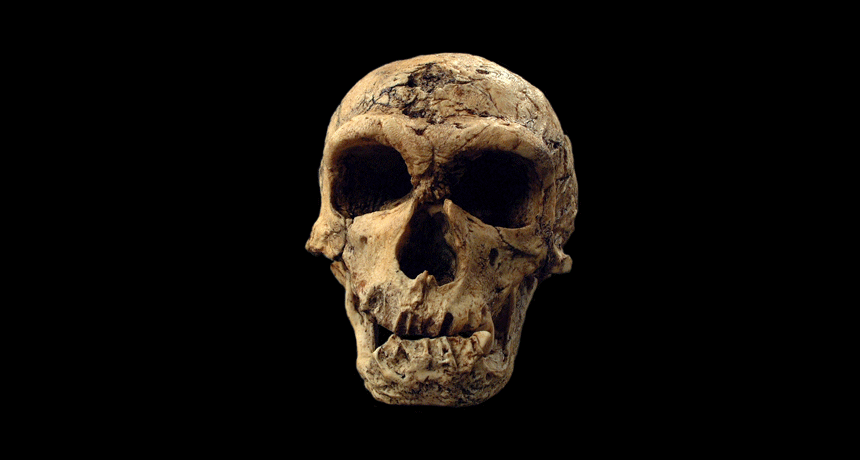(单词翻译:单击)
One thing that would help to resolve matters would be evidence of interbreeding, but that is not at all easy to prove, or disprove, from fossils. In 1999, archeologists in Portugal found the skeleton of a child about four years old that died 24,500 years ago. The skeleton was modern overall, but with certain archaic, possibly Neandertal, characteristics: unusually sturdy leg bones, teeth bearing a distinctive "shoveling" pattern, and (though not everyone agrees on it) an indentation at the back of the skull called a suprainiac fossa, a feature exclusive to Neandertals. Erik Trinkaus of Washington University in St. Louis, the leading authority on Neandertals, announced the child to be a hybrid: proof that modern humans and Neandertals interbred. Others, however, were troubled that the Neandertal and modern features weren't more blended. As one critic put it: "If you look at a mule, you don't have the front end looking like a donkey and the back end looking like a horse."
有一样东西会有助于解决问题,那就是有关异种交配的证据,不过根据化石是根本难以证明或否定的。1999年,确萄牙考古学家发现了一副死于24500年前的4岁小孩的骸骨。这副骸骨从总体上看是—个现代人,但又具有远古人类,也许是尼安德特人的某些特征:腿骨非常强壮,牙齿明显突兀,而且(尽管并不是每个人都赞同这一点)在颅骨后部有一个被称为枕外隆凸点上凹的锯齿状凹痕,这是尼安德特人独有的特征。圣路易斯的华盛顿大学的埃里克·特林考斯,一位研究尼安德特人最权威的学者,称这个小孩是一个杂种,是现代人和尼安德特人异种交配的证据。不过,另外一些人则为小孩身上尼安德特人和现代人的特征混合得不够而感到困惑。正如一个批评家所指出的那样:“如果果你看一头骡子,不会正面看上去像一头驴,后面看上去像一匹马。”

Ian Tattersall declared it to be nothing more than "a chunky modern child." He accepts that there may well have been some "hanky-panky" between Neandertals and moderns, but doesn't believe it could have resulted in reproductively successful offspring.1 "I don't know of any two organisms from any realm of biology that are that different and still in the same species," he says.
伊恩·特萨尔认为小男孩只不过是“一个较为强壮的现代人小孩”。他承认在尼安德特人和现代人之间也许确实存在过不少所谓的“杂种” ,但是不认为能成功地生育后代。(注:有一种可能是尼安德特人与克罗马农人有不同数量的染色体,那是相近于但非同一种的动物交配时经常出现的复杂情况。例如,在驯养动物中,马有64对染色体,面驴子只有62对。将速两种动物进行交配,就会生出一个有63对对生殖无用的染色体的后代。简而言之,-头没有繁殖能力的骡子。)“在生物学范畴里,我没有听说过有任何两个生物不同而又仍然属于同一个种属的。”他说。


